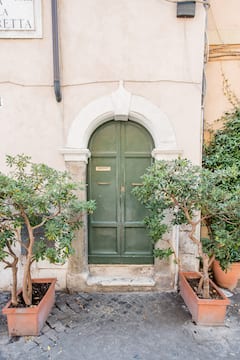If you love history, art, and the play of sunlight on water, make it a point to see some of Rome’s magnificent fountains when you visit. The dusty stone streets, some of them still bearing the imprint of wagon wheels, wind through the city, flanking tightly packed buildings of brick, stone, and stucco. They range from various periods, all of them old, and bear the loving attention to aesthetic detail lost in modern architecture.
As you pass them, they almost whisper, “I have such stories to tell.” Yet it’s the city’s more than 2000 fountains that bring it life, from the fifty grand flowing monuments to the small drinking fountains babbling out of the walls of buildings - sometimes hiding down ancient alleys like secret treasures.
Immerse yourself in beauty and history

Artists have travelled to Rome for centuries to take advantage of the light. The air itself seems to be a different color. The nearly omnipresent sunshine feels less harsh here, but don’t be fooled into forgetting the sunscreen. Light saturates every surface, and nowhere does it do so more beautifully and playfully than on the water erupting from the Renaissance stonework. Some of these bigger Roman fountains are so famous it feels a little strange to be able to walk right up to them, and touch or sit on the wall of the pool. You can reach out and submerge your hand in the waters that have been flowing for centuries.
Perhaps the most famous of Rome’s fountains

The Trevi Fountain (Fontana di Trevi) is the largest and perhaps the most iconic of the monumental water features. Although not the original fountain on this spot, it still commemorates the story of how a water supply was discovered and channeled over eight miles into the city. The central figure, Oceanus, rides a chariot of shells, pulled by two winged horses of differing temperaments. A glittering sheet of water rushes before him and fills the sea-green pool. Abundance and Salubrity (Health) stand in the niches on either side, both offering life-sustaining water. This is the tour books’ number one fountain to see, but don’t limit yourself; every water feature offers something different.
The Four Rivers Converge in the Piazza Navona

The Fountain of the Four Rivers (Fontana dei Quattro Fiumi) is another famous fountain, located in center of the Piazza Navona, which is itself worth seeing, and boasts two additional impressive fountains at either end - the Fountain of the Moor (Fontana del Moro) and the Fountain of Neptune (Fontana del Nettuno). The central fountain, however, has much more visual detail. It features four river gods: the Nile, the Ganges, the Danube, and the Rio de la Plata.
The complex work is crowned by an ancient Egyptian obelisk, and numerous carvings of animals and emblems can leave you staring for quite some time, lest you miss something. But more importantly, it’s gorgeous. The figures seem alive; they’re all carved in motion, muscles tensed in sync with the implied action; the expressions of each god and beast are focused intently on what they’re doing.
You might be interested in these Airbnbs!
Enjoy the variety of as many fountains as you can

During your tour, there are too many fountains to catch them all. Some of the more noteworthy candidates include the reclining lions flanking a great obelisk in the People’s Square (Piazza del Popolo), and the Fountain of the Ugly Boat (Fontana della Barcaccia), situated at the base of the Spanish Steps (which, incidentally, are worth the climb for a sumptuous view of the city’s architecture).
The Marforio - or anciently, Mare en Foro (The Sea in the Forum) - is another must-see fountain of Rome, depicting Oceanus and dating from the 1st century CE. Visitors will recognize his noble, almost nurturing face and his lounging, barely-covered godly physique from numerous photos of him in film and print. The Turtle Fountain (Fontane delle Tartarughe) features four tortoises balanced precariously at the top, and radiates a mild sense of whimsy. For a more erotic vibe, the Fountain of the Naiads adorns the Piazza della Repubblica; here, four very naked nymphs pose alluringly amidst a playful spray of water.
Rome Tour Guide
Jamie
Tours by Jamie
Get adventurous and meander a little

When you stray off the beaten tourist path, every turn and corner offers new insights into the character of this ancient city. So as long as you can navigate with a decent map, don’t be afraid to explore. Some of the least grandiose fountains are the best finds, because they are quiet, almost hidden, and carry a patina of moss and centuries of water stains. It’s like stumbling onto a remnant of the old magic, and you might find yourself tempted to refresh your body and psyche by drinking out of one of these watering holes. Happily, you can, because all fountains are potable unless otherwise marked.
Rome's Pride
Rome’s water features are an integral part of its vitality and history. They are also important to the city’s pull on tourists. Getting to them is easy if you’re accustomed to walking, but wear comfortable shoes because there are so many wonderful things to see that you may find yourself trekking around all day. Whatever you do, make sure you take the time to sit still for a moment or two by some laughing water, as it bursts from old rock out into the light. Watch the people go by, and the pigeons that are equally attracted to the fountain’s cool overspray and the scraps they can get from snacking tourists. This is Rome.
History
Get Trip101 in your inbox
Unsubscribe in one click. See our Privacy Policy for more information on how we use your data











.jpg)









Create an account to